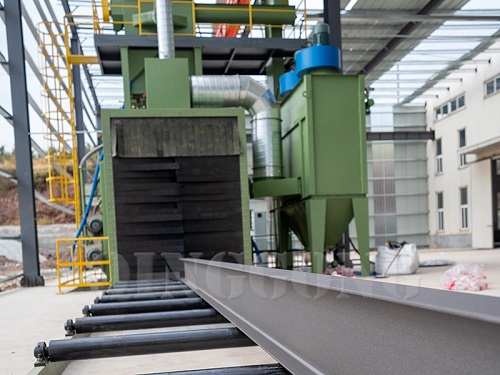Three commonly used abrasives and the amount of dust in sand blasting room
The commonly used abrasives can be classified into three main categories: steel shot, garnet, and brown fused alumina.
The amount of dust generated by these three types of abrasives during blasting is different. Steel shot produces the least amount of dust, garnet produces the most, and brown fused alumina is in between. Given the varying dust levels, the required equipment and airflow for the same volume will differ.
Two methods to calculate the airflow in a sand blasting room
For a sand blasting room, there are two methods to calculate the airflow:
Air exchange rate
This involves estimating the air exchange rate based on the volume of the entire sand blasting room and the concentration of dust, or calculating it using a formula. By determining how many times the air needs to be exchanged per minute, we can ascertain the total airflow. Typically, for something like sand, the air exchange rate is around 150 to 200 times per hour. For steel shot, it is about 120 to 150 times per hour, and for brown fused alumina, it is generally around 150 times. This method is based on air exchange rates.
Cross-sectional area calculation
This ensures the absorption of dust within the sand blasting room to calculate the airflow. By considering the cross-sectional area, we account for the negative pressure needed within the sand blasting room to prevent dust from escaping outside. A slight negative pressure is sufficient to allow dust to naturally settle inside the sand blasting room or be extracted at the exhaust vent and then filtered through a dust collector outside.
Working principle of QGMA sand blasting room
Compressed air supply: The sand blasting room requires a certain amount of compressed air to drive the blasting operation. Typically, air is compressed to a certain pressure by a compressor, then delivered to the sandblasting room.
Abrasive storage and delivery: The sand blasting room is usually equipped with an abrasive storage unit to hold the abrasive materials. Abrasives are transported to the nozzle of the blasting gun via a delivery system, such as a screw conveyor or pneumatic conveying system.
Blasting operation: Once the compressed air and abrasives are ready, the operator can use the blasting gun to project the abrasive onto the surface of the object to be treated. The blasting gun typically consists of a nozzle and a pneumatic control device. By adjusting the flow rate of the compressed air and the speed of abrasive projection, the operator can control the blasting effect.
Abrasive recovery and recycling: The sand blasting room typically features a recovery system to collect and recycle abrasives. The recovery system of this professional sandblasting equipment usually includes a collector and a separator. The collector gathers abrasives blasted onto the object's surface and those rebounded into the sand blasting room. The separator then separates the abrasives from wastes, allowing reusable abrasives to be returned to the storage unit.
Emission and filtration: The blasting process generates a large amount of dust and waste. To protect the environment and the health of the operators, the sand blasting room is usually equipped with an emission and filtration system. This system uses filters and dust collectors to separate waste and dust, then discharges clean air outside.
Control system: The sand blasting room is typically also equipped with a control system to monitor and regulate the entire blasting process. The control system can adjust parameters such as the pressure of the compressed air, the delivery speed of the abrasives, and the projection angle of the blasting gun to achieve optimal blasting results.
 EN
EN
 fr
fr  de
de  es
es  it
it  ru
ru  pt
pt  ar
ar  th
th  pl
pl  ro
ro 


